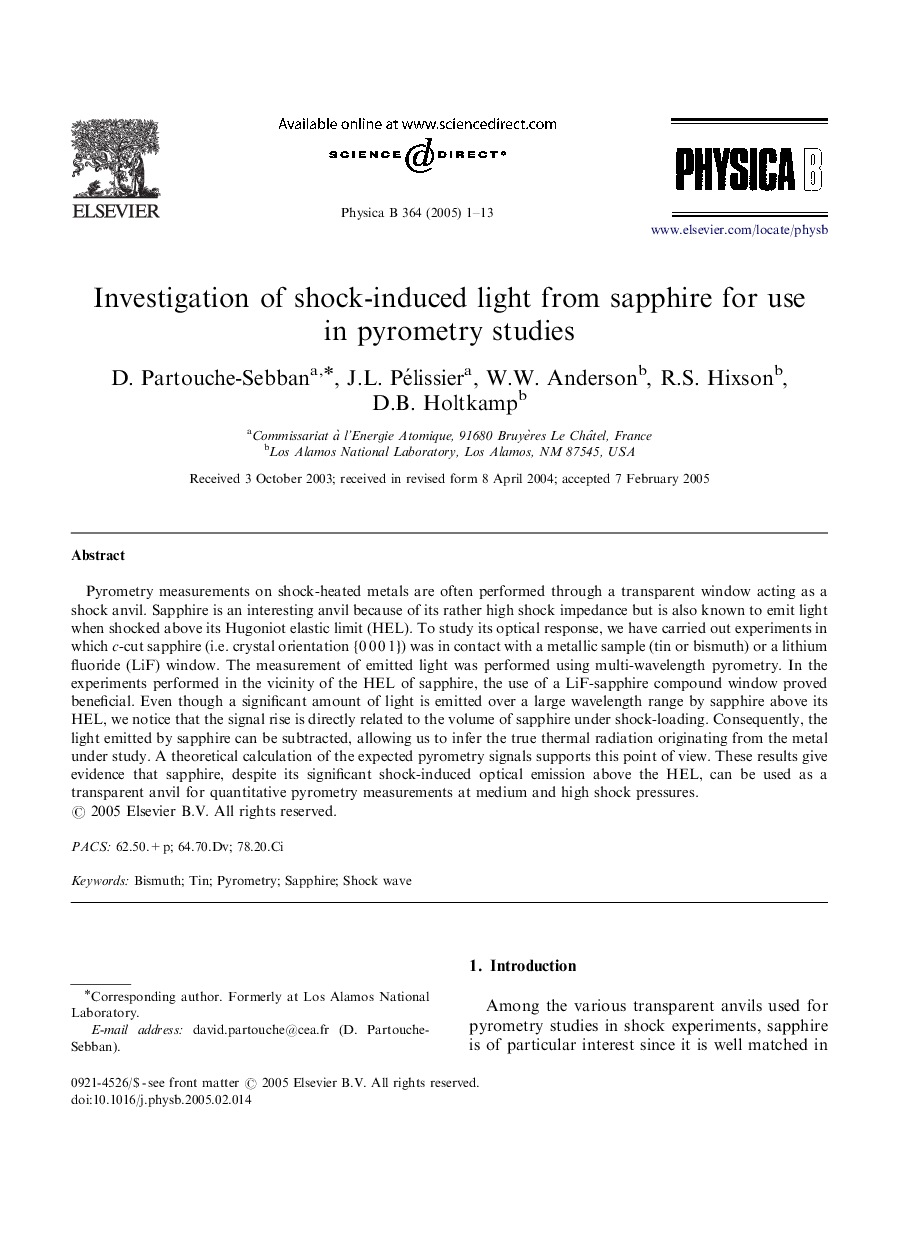| Article ID | Journal | Published Year | Pages | File Type |
|---|---|---|---|---|
| 9837523 | Physica B: Condensed Matter | 2005 | 13 Pages |
Abstract
Pyrometry measurements on shock-heated metals are often performed through a transparent window acting as a shock anvil. Sapphire is an interesting anvil because of its rather high shock impedance but is also known to emit light when shocked above its Hugoniot elastic limit (HEL). To study its optical response, we have carried out experiments in which c-cut sapphire (i.e. crystal orientation {0001}) was in contact with a metallic sample (tin or bismuth) or a lithium fluoride (LiF) window. The measurement of emitted light was performed using multi-wavelength pyrometry. In the experiments performed in the vicinity of the HEL of sapphire, the use of a LiF-sapphire compound window proved beneficial. Even though a significant amount of light is emitted over a large wavelength range by sapphire above its HEL, we notice that the signal rise is directly related to the volume of sapphire under shock-loading. Consequently, the light emitted by sapphire can be subtracted, allowing us to infer the true thermal radiation originating from the metal under study. A theoretical calculation of the expected pyrometry signals supports this point of view. These results give evidence that sapphire, despite its significant shock-induced optical emission above the HEL, can be used as a transparent anvil for quantitative pyrometry measurements at medium and high shock pressures.
Related Topics
Physical Sciences and Engineering
Physics and Astronomy
Condensed Matter Physics
Authors
D. Partouche-Sebban, J.L. Pélissier, W.W. Anderson, R.S. Hixson, D.B. Holtkamp,
